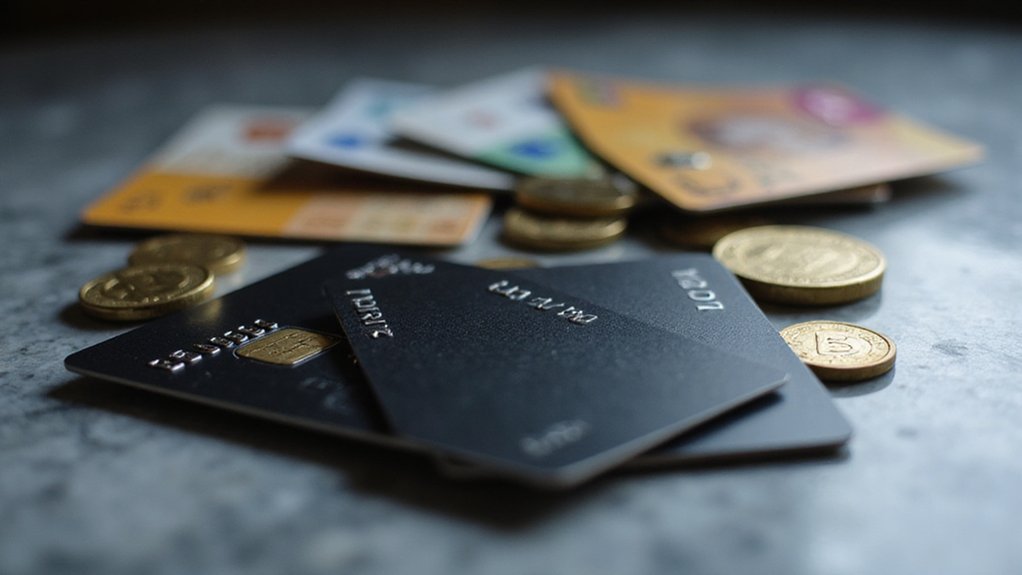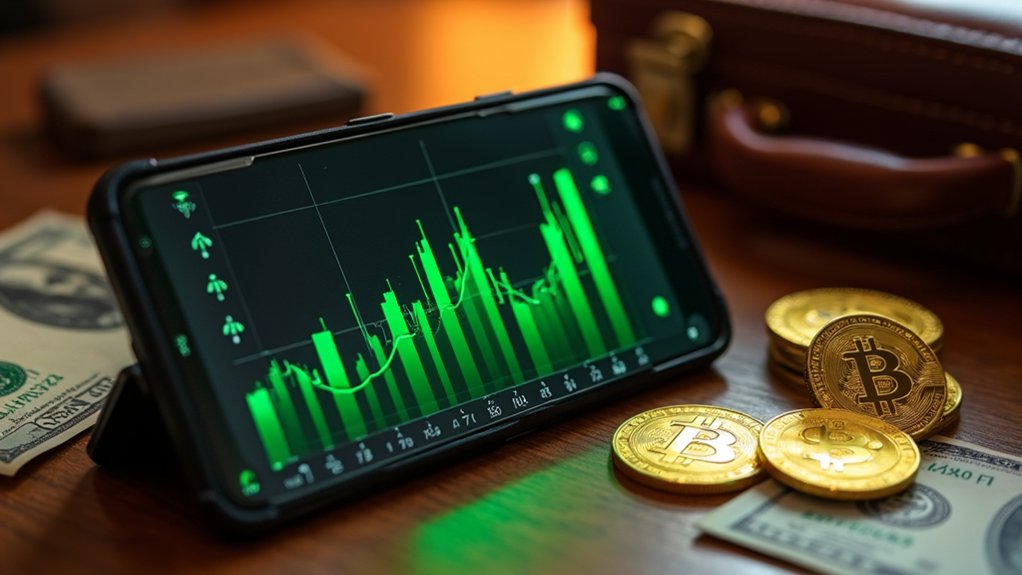While traditional banks continue to trumpet their digital transformation initiatives with the enthusiasm of a carnival barker hawking miracle cures, crypto cards have quietly orchestrated what amounts to a payment revolution—one measured not in billion-dollar transactions but in the humble €8.50 grocery run and the €4.20 coffee purchase.
Europe witnessed a 15% surge in crypto card orders throughout 2025, marking a decisive shift from cryptocurrency’s investment-centric origins toward practical utility. This growth reflects consumers embracing digital assets for mundane expenses rather than speculative ventures—a development that should make traditional payment processors moderately uncomfortable.
The payment revolution isn’t announced with press releases—it’s quietly purchased one €8.50 grocery transaction at a time.
The numbers tell a compelling story of disruption through miniaturization. Forty-five percent of crypto card transactions hover below €10, territory historically dominated by cash and contactless bank cards. The average crypto card transaction registers €23.70, considerably lower than traditional bank cards’ €33.60 average, suggesting users gravitate toward frequent, smaller purchases rather than occasional larger ones.
Perhaps most revealing is crypto cards’ online dominance: 40% of transactions occur digitally, nearly double the 21% average for conventional bank cards in the eurozone. This preference indicates crypto card holders have embraced e-commerce with remarkable enthusiasm, leveraging blockchain transparency and enhanced security features that traditional payment rails struggle to match.
Spending patterns mirror established consumer behavior with fascinating variations. Groceries account for 59% of crypto card expenditure—closely matching bank cards’ 54%—while dining and bar purchases claim 19%, exceeding traditional card averages for food and beverage spending. These figures suggest crypto cards aren’t merely experimental novelties but genuine payment alternatives gaining mainstream traction. Meanwhile, the underlying infrastructure shows stablecoins powering 73% of crypto transactions, providing stability that makes these everyday purchases practical. The appeal extends beyond mere novelty, as crypto cards deliver near-instant transactions that eliminate the traditional banking delays consumers have grown accustomed to tolerating.
The demographic undertones are unmistakable: younger, digitally-native consumers are spearheading this micro-spending revolution, particularly in urban environments where technological adoption accelerates rapidly. They’re treating cryptocurrency not as digital gold to be hoarded but as functional currency for transportation, entertainment, and retail purchases. Major exchanges like Binance support hundreds of cryptocurrencies that can be converted seamlessly for everyday spending through these emerging payment platforms.
This transformation represents something banks initially dismissed as niche market theater—crypto cards systematically challenging traditional payment infrastructure through accumulated small transactions rather than dramatic technological disruption. The revolution isn’t arriving with fanfare; it’s manifesting one coffee purchase at a time.









